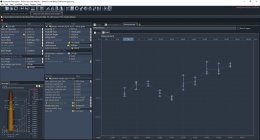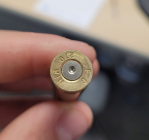Hi Everyone. I am hoping you can help. I have never used the scatterlee method before, so I decided to give it a try. I shot 3 shot groups of 0.2gr increments for a new bullet I am trying out. What nodes would you hone in on here and what would your next step be? Would you try to do a few rounds at 0.1 gr increments in those ranges, or move onto seating depth for groups now?
Forum Boss: The method is called Satterlee. See:
| Charge Weight | Avg Vel (ft/s) | SD (ft/s) | ES (ft/s) | Min (ft/s) | Max (ft/s) | Comments |
| 54.00 | 2964.0 | 11.5 | 22.0 | 2955.0 | 2977.0 | |
| 54.20 | 2985.0 | 10.6 | 20.0 | 2973.0 | 2933.0 | |
| 54.40 | 2988.0 | 8.5 | 12.0 | 2982.0 | 2994.0 | |
| 54.60 | 2963.3 | 8.0 | 16.0 | 2955.0 | 2971.0 | |
| 54.80 | 2964.7 | 5.0 | 10.0 | 2945.0 | 2955.0 | |
| 55.00 | 2988.0 | 20.3 | 39.0 | 2972.0 | 3011.0 | |
| 55.20 | 2994.7 | 9.6 | 19.0 | 2986.0 | 3005.0 | |
| 55.40 | 3027.0 | 16.6 | 31.0 | 3015.0 | 3046.0 | |
| 55.60 | 3026.3 | 14.0 | 27.0 | 3015.0 | 3042.0 | |
| 55.80 | 3036.7 | 4.7 | 9.0 | 3033.0 | 3042.0 | Day 1 |
| 55.80 | 3044.0 | 5.5 | 10.0 | 3041.0 | 3051.0 | Day 2 |
| 56.00 | 3052.7 | 8.1 | 16.0 | 3044.0 | 3060.0 | Tight Group |
| 56.20 | 3075.0 | 6.7 | 12.0 | 3068.0 | 3080.0 | |
| 56.40 | 3082.3 | 5.7 | 11.0 | 3076.0 | 3087.0 | |
| 56.60 | 3115.0 | 4.6 | 9.0 | 3110.0 | 3119.0 | Tight Group |
Forum Boss: The method is called Satterlee. See:
Attachments
Last edited by a moderator:















